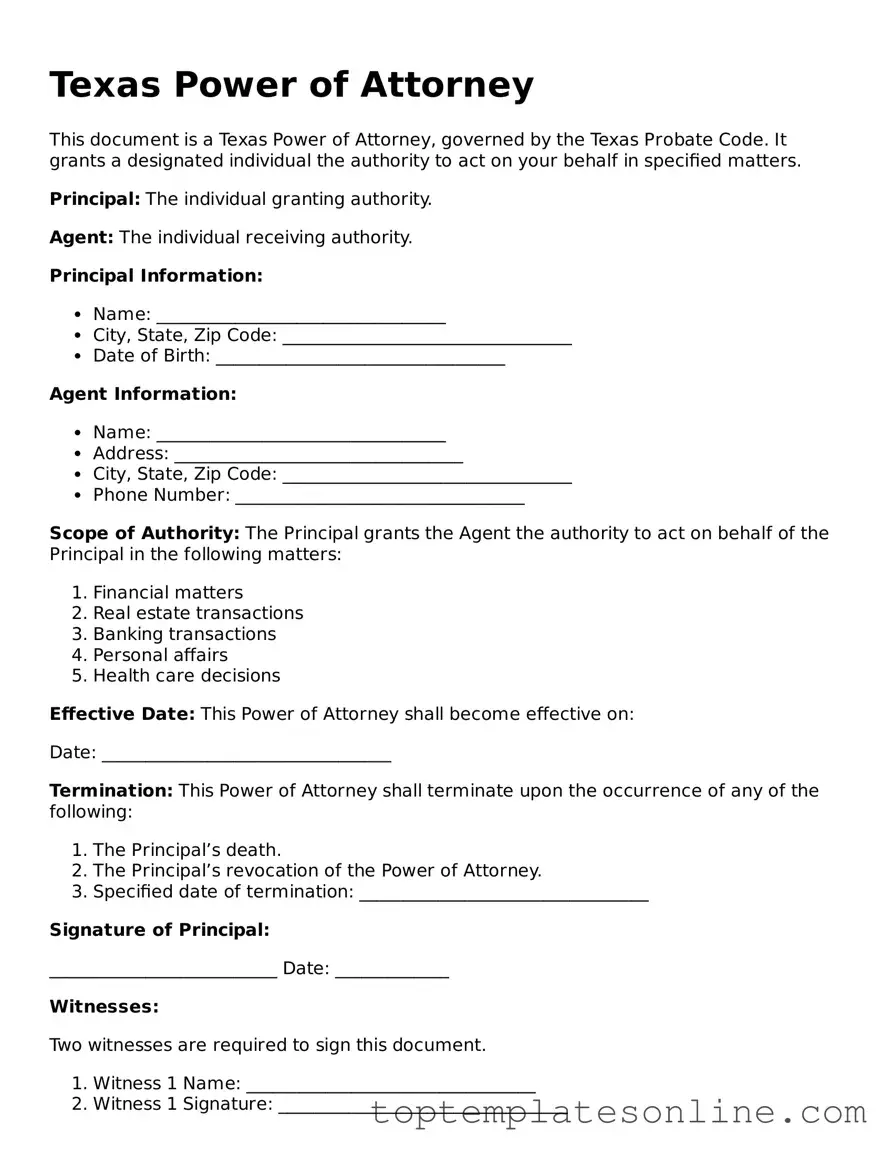The Texas Power of Attorney form is a vital legal document that grants an individual, known as the agent or attorney-in-fact, the authority to act on behalf of another person, referred to as the principal, in various matters. This form can be tailored to suit specific needs, allowing the principal to define the scope of authority granted. It encompasses a range of responsibilities, including financial decisions, property management, and healthcare choices, depending on the type of Power of Attorney selected. In Texas, individuals can choose between a general Power of Attorney, which provides broad authority, and a durable Power of Attorney, which remains effective even if the principal becomes incapacitated. Additionally, there are specialized forms for healthcare decisions, ensuring that medical preferences are honored. The execution of the form requires the principal's signature, and while witnesses are not mandatory, having them can enhance the document's validity. Understanding the implications and uses of the Texas Power of Attorney form is crucial for anyone looking to plan for future needs or delegate authority effectively.
